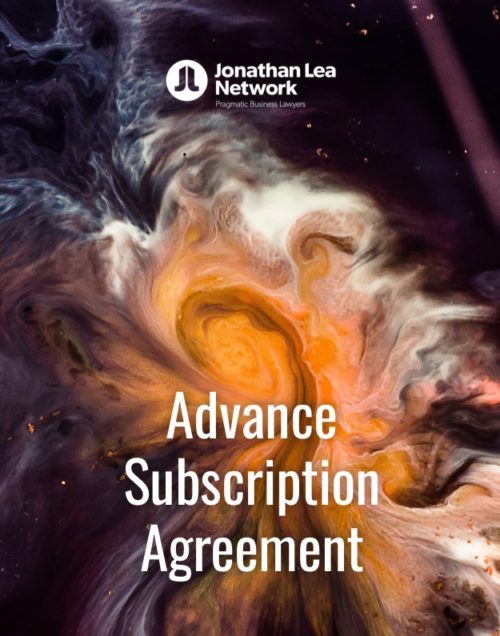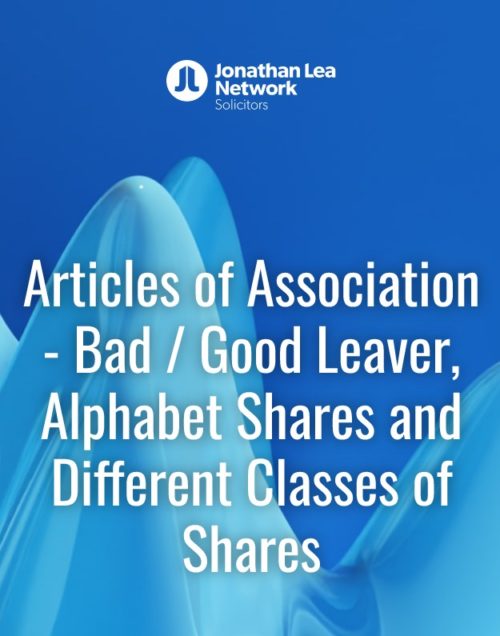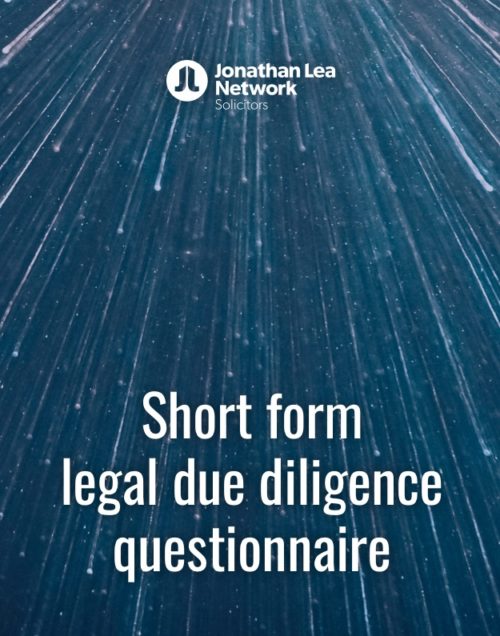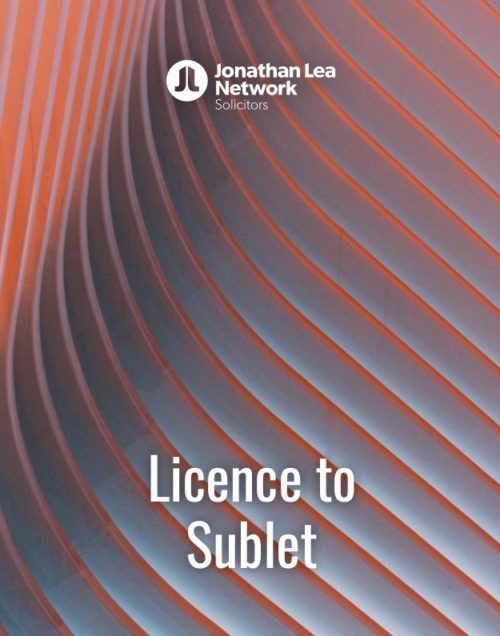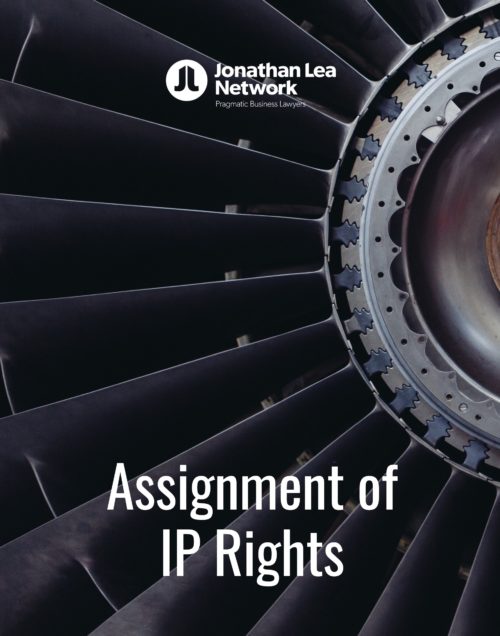Director’s Service Agreement
£6.99
This guide aims to set out how to correctly fill-out the template and explains all significant provisions so as to allow you to put into effect a valid and legally binding agreement.
A director’s service agreement is very similar to a contract of employment; it outlines the rules, duties and reciprocal obligations that govern and underpin the relationship between the director and the company. Please note that this document is not appropriate for a non-executive director.
Note: As this document is a simplified, short form agreement, it does not incorporate the full range of directors’ possible benefits. Please note that this document excludes the following: relocation expenses, permanent health insurance, life assurance, private medical insurance, directors’ and officers’ insurance and details of a company car [allowances]. Should you wish for the above to be covered, separate clauses will need to be included with the mentioned titles.
This agreement is intended as a template only and must be adapted to the particular circumstances of your case.
Your input is required at the parts of the agreement highlighted in yellow and the wording inside the square brackets which we have included explains clearly the information that should be inserted. There are also options of what to include inside brackets (these are separated with bold ‘OR’s which must also be removed). To input the right information, simply delete the phrases/ words that don’t apply.
You are advised to fill in the wording in square brackets in lower case unless directed otherwise. Any figures should be entered in numerical form. The brackets should be removed after the amendments are made (so as to produce a ‘final form’ version of the agreement).
Clause Breakdown
Parties
Complete details accordingly and delete the relevant text where appropriate. It has been assumed that the employer is a company on the template, however this can be modified as necessary.
Clause 1 – (Interpretation)
Clause 1.1 sets out the definitions that will apply throughout the agreement, the main purpose of this is to reduce repetition within the body of the agreement, making it shorter and easier to read. In addition, as it gives specific meanings to particular terms used in the agreement, it also both avoids ambiguity and makes it clear that those terms are intended to include matters which they might otherwise be found not to cover (or vice versa). Unless expressly defined, the courts will interpret non-technical terms in accordance with their ordinary and natural meaning, or the meaning which can be inferred by the words the parties chose in the document. Extrinsic expert evidence may be necessary to interpret technical terms not defined in the document itself.
Clause 1.5 may be removed if not including the schedules at the end of the agreement.
Clause 2 – (Term of Appointment)
This clause sets out the term of the employment. Remove those that don’t apply and insert relevant names, numbers and dates. If the document is to be signed after the employee has started work, this clause should specify that the appointment is deemed to have commenced on the date that the employment actually started. This document requires that notice of termination must be given in writing, but this may be changed to include further methods if desired.
Clause 2.2 is dedicated to any probationary period that may apply to the role. There are two options; either no probationary period applies at all or it does and the number of months that it lasts for can be stipulated here.
Clause 3 – (Professional Qualifications)
This clause can be removed if not applicable. It concerns any and all professional qualifications required for the role in question and the consequences if the employee ceases to hold this qualification during the appointment.
Clause 4 – (Employee Warranties)
This clause lays out the Employee’s warranties, specifically their warrant to refrain from breaching a court order or any of the terms within the contract. It also touches on the employee’s entitlement to work in the UK to protect the employing company should the employee fall short of this requirement.
Warranties are effectively contractual promises that a given statement of fact is true. Clause 4.1 means that the employee is providing a contractual promise to the effect that they are able to enter into this employment contract without breaching any court order or any binding obligations that they have for example under another contract.
Clause 4.2 is a standard clause that deals with the employee’s immigration status. The clause contains a warranty that the employee is entitled to work within the UK. It is advisable to have such a warranty within the agreement in view of the fact that an employer will be liable to a civil penalty if it negligently employs someone who is not entitled to work within the UK and will commit a criminal offence if it knowingly employs such a person. Inclusion of this warranty shifts some of the burden on to the employee (as the employee will be in breach of contract if they are not entitled to work in the UK).
Clause 5 – (Duties)
Clause 5.1 must include the job title or a brief description of the work which the employee is employed to carry out, as required by section 1(4)(f) ERA 1996.
Clause 5.2 stipulates the director’s duties during their appointment.
Clause 5.3 concerns tax evasion and rids the employing company of liability should the appointed director engage or facilitate tax evasion.
Clause 5.4 mentions reference to a ‘Staff Handbook’, such a document is not explicitly required by law but is something big and small businesses now do as matter of course. If drafted properly, handbooks can form a useful tool in employee relations and represent the culture of your business that you want to instil.
Clause 5.5 covers the proprietary aspect of the appointment.
Clause 6 – (Place of Work)
This clause covers both a fixed place of work and the possibility of necessary travel for work. The travel section (Clause 6.2) may be removed if inapplicable. This clause is important as an employee’s place of work is significant when determining whether redundancy arises.
Clause 7 – (Hours of Work)
This clause requires input of working hours and days. The Good Work Plan changes which apply to those starting work on/after 6 April 2020 require a section 1 statement to not only state the employee’s normal working hours but also the days of the week the employee is required to work. The statement should also state how they may vary or how that variation will be determined. The three options are: (1) appointment to work a specified length of time on specified days (e.g.: 9:00am – 5:00pm, Monday – Friday.), (2) appointment to work but with varied days and times but with fixed number of hours; and (3) appointment to work with varied days and hours but with fixed number of days. Remove options that are inapplicable and input numbers.
Clause 8 – (Salary)
This clause requires input of salary and the employee’s pay-day. It can also stipulate the accrual of salary and the terms of salary review.
Clause 9 – (Benefits)
Should the employee be entitled to benefits this may be listed under clause 9.1. Benefits excluded by this clause are as follows; sick pay, pension, holiday pay or other paid leave. These are set out separately in the contract. Alternatively, this clause may be inapplicable; in which case the first two paragraphs may be removed and the ‘You are not entitled to any benefits during the Appointment’ may remain. You may choose for the entire clause may be removed, but this may result in the employee enquiring about benefits if it is not stipulated that none are applicable.
Clause 10 – (Expenses)
There is an implied right in the director’s service agreement to recover a necessary expense.
Clause 10.2 protects the employing company where there is no formal expenses policy in place by requiring that the employee gets the consent of the company to incur the expenses – to avoid the situation where the employee goes out and incurs expense (under the impression that they will be reimbursed) and the company informs them that they are under no obligation to reimburse such costs.
Clause 10.3 can be removed if the employee is not to be granted a company credit card and this is not envisaged at all during the employee’s appointment.
Clause 11 – (Bonus)
This clause may be removed in its entirety (please note that it is also important to review the document to ensure that you also remove all/any reference to it). If you choose to include it, dates need to be entered for company’s financial year and it must be made clear whether (according to clause 11.1) the company or the board will have absolute discretion to pay bonuses, determine intervals and conditions of the bonuses etc.
Clause 12 – (Holidays)
This clause stipulates the company’s holiday year, the employee’s holiday entitlement, the notice period required to take holiday, the amount that may be taken at a time, the possibility of ‘carrying over’ holiday entitlement to the next holiday year and consequences of taking excess holiday. Employers should specify a common holiday year for all employees, to avoid the administrative difficulties of each employee’s holiday year running from the date they started employment.
Clause 13 – (Incapacity)
This clause covers situations where the employee is absent from work due to incapacity (i.e.: sickness, injury etc.). Here, you can lay out the way in which the employee must notify the company, the employee’s eligibility to receive of sick pay. A table at the bottom of the clause can be used to stipulate the employee’s entitlement to Statutory Sick Pay depending on the number of years of service.
Clause 14 – (Other Paid Leave)
The most common types of leave that will be included in this section (if available) are all types of statutory family leave (maternity leave, paternity leave, adoption leave, shared parental leave and parental bereavement leave), time off for trade union activities, bereavement or other compassionate leave, paid sabbaticals or career breaks and paid time off for jury service.
As statutory maternity leave will not be available to males, employers may wish to remove this wording for male employees (or vice versa with paternity leave and female employees).
Clause 15 – (Training)
Employers are required to list what training entitlement is required to be undertaken by the employee or is otherwise on offer to them. According to ERA 1996, the employer must set out:
– any training from the employer to which the employee is entitled;
– any part of that training entitlement which the employer requires the employee to complete; and
– any other training which the employer requires the employee to complete and which the employer will not pay for.
Clause 16 – (Outside Interests)
This clause restricts the employee’s outside interests during the period of employment.
Clause 17 – (Confidential Information)
The content of this clause expands the common law duty of confidentiality that is implied into every contract of employment. Employers are able to protect confidential information while the employee is employed. However, in the absence of an express provision, protection after termination will only extend to information which is so confidential as to amount to a trade secret, anything below this standard will not be covered.
Clause 18 – (Intellectual Property)
This clause is intended for use between an employer and an employee who, while not employed in a technical or creative role, will still inevitably create IP rights in the course of employment.
Clause 19 – (Ceasing to be a Director)
This clause provides that the employee must not resign as a director of the company without the consent of the board of directors.
Clause 20 – (Payment in Lieu of Notice)
This clause provides the employer with the option to make a payment in lieu of notice (“PILON”). A PILON is a contractual right to pay an employee a lump sum rather than require them to serve out their contractual notice period.
Clause 20.1 confirms that the employer reserves the right to terminate the appointment at any time with immediate effect. Within 28 days of terminating the appointment, the employing company must make a payment (or the first instalment of a payment in lieu) to the employee in lieu of notice. Payment in lieu will not include those elements outlined in sub-clauses 20.1 (a) – (c).
Clause 20.2 allows the employer to make the payment in lieu in instalments rather than in one lump sum. The employee has a duty to mitigate the payment in lieu monthly instalments by seeking alternative income. The instalment payments will then be reduced by the amount of any such alternative income received by the employee.
Clause 20.3 confirms that where the employer terminates the appointment due to the employee having breached it, it will not be required to make payments in lieu of notice to the employee in such circumstances.
Clause 21 – (Termination Without Notice)
Clause 21.1 sets out the circumstances in which the company will be entitled to terminate the employee’s contract with immediate effect without notice (and with no liability to make any further payment to the employee).
Clause 21.2 confirms that the company can exercise its right under clause 21.1 if any other event occurs (that is not specified) which gives the company the legal right to terminate the employee’s contract.
Clause 22 – (Change of Control)
This clause should not be used without specific instructions from the employer. It created further obligations for the employer and may not be required at all. Please not that if this clause is to be included, the definition of Control and Change of Control in the Interpretation clause are needed.
Clause 23 – (Garden Leave)
This clause permits the employer to put the employee on garden leave. Garden leave refers to a period during which an employee remains on normal salary and is bound by their contract of employment but is requested, usually under this clause of the contract, not to attend the office or contact clients or customers. This clause also stipulates the maximum length of guardian leave.
Clause 24 – (Obligations on Termination)
This clause deals with the return of company property upon termination of the employee’s contract. The employer should check that all crucial property is identified in this clause.
If the employer is particularly concerned about confidential information, clauses can be included here that impose an obligation on the employee to carry out a proper search of his/her home/any other premises at which he/she may have kept property of the employer.
Clause 25 – (Restrictive Covenants)
Restrictive covenants are clauses within a director’s service agreement which prevent a leaving employee from taking to clients or key employees from their former employer, or working for a competitor.
Clause 26 – (Disciplinary and Grievance Procedures)
Inclusion of this clause and its provisions is required under the Employment Rights Act 1996.
Clause 26.1 – as this clause states that the company’s disciplinary and grievance procedures are located in another document (i.e. the staff handbook), that document needs to be reasonably accessible to the employee. You will note that the final sentence states that the rules are not contractual: this is to avoid an employee arguing there has been a breach of contract by the employer if the employer does not exactly follow the rules/procedures. Following the relevant non-contractual disciplinary and grievance procedures will nonetheless be important for the employer to resist, for example, unfair dismissal or discrimination claims.
Ensure that clause 26.2 is consistent with the company’s disciplinary and grievance procedure. If your business is large enough to have a HR department or somebody who specifically deals with such complaints, their name should be inserted in this clause. It is advisable not to have the most senior person within the employer here as if there is an appeal on a grievance decision, the complaint will need to be heard at a higher / further level of management.
Again, ensure that clause 26.3 is consistent with the company’s disciplinary and grievance procedure. Appeals on grievance / disciplinary decisions should be heard by more senior members of staff than those with whom the grievance was initially raised with (though this isn’t legally required).
Clause 26.4 gives the employer the right to suspend the employee while investigating possible serious misconduct by the employee etc. This clause should be consistent with the company’s disciplinary / grievance policy.
During any period of suspension an employee should be provided with the pay and benefit entitlements to which they would have been entitled if they had not been suspended. The withholding of pay and benefits can make it more likely that the suspension will be viewed as an impermissible disciplinary sanction.
The entitlement to pay under the contract must therefore be considered carefully. In the case of Uttlesford DC v Evans [1996], the employment tribunal’s interpretation of the contractual documentation (as upheld by the Employment Appeals Tribunal) was that when an employee was subject to a disciplinary suspension they were entitled to full pay, i.e. their normal pay as set out in their contract.
The period of suspension should be as short as possible, as unnecessarily leaving an employee suspended for a long period may amount to a constructive dismissal, even where the contract allows for suspension with pay. Some employers deal with this by providing in their disciplinary policy for regular reviews of the suspension, for example every two weeks, to consider whether the suspension remains justified with regards to the investigation into the disciplinary matter.
Clause 26.5 sets out the employee’s rights and responsibilities during the period of suspension.
Clause 27 – (Pensions)
The particulars of this clause may be provided in either the principal statement or another instalment of the section 1 statement within two months of the employees start date. In the unlikely event the director is not eligible for auto-enrolment, this must be stated (section 2(1), era 1996). Please note that this clause contains different clause options for an employer, please remove those that don’t apply and insert the necessary information into the relevant remaining option.
Clause 28 – (Data Protection)
This clause covers the employee’s compliance with the UK General Data Protection Regulation and the Data Protection Act 2018 (as amended and retained in English law post-Brexit). This clause also provides an opportunity to include the applicability of any other relevant policies.
Clause 29 – (Collective Agreement)
The ERA 1996 requires an employee’s contract to specify whether any collective agreements directly affect the terms and conditions of their employment. This must either be stipulated and described or it must be declared that there is no collective agreement which directly affects the appointment.
Clause 30 – (Reconstruction and Amalgamation)
This is a standard clause to protect the company from the employee bringing a claim purely on the grounds that the employing company has restructured.
Clause 31 – (Notices)
This clause sets out how notices should be given under the agreement. The only notices provided for under this agreement are:
– notice of termination by the employer or employee;
– notice by the employer of changes to benefits; and
– notice by the employer to put employee on garden leave.
Clause 32 – (Entire Agreement)
This clause need not be amended as it simply stipulates the overall agreement taking precedence and replacing any previous agreements. It also excludes any remedies available to either party in respect of any statement, representation, assurance or warranty if it is not set out in this agreement.
Clause 33 – (Variation)
This standard clause protects the agreement from any variation of the clauses within the agreement unless signed by the parties (or their authorised representatives).
Clause 34 – (Counterparts)
This clause provides that the parties to the director’s service agreement may execute (i.e. sign) separate copies of it, rather than all parties having to sign the same copy of the agreement. Using a counterparts clause is advisable for reasons of certainty, to prevent any argument that the agreement is not binding because it has not been properly executed and are useful where the parties are executing separate copies of an agreement.
The absence of counterparts will not of itself invalidate an agreement that the parties execute by separate counterparts. However, a counterparts clause may help to prevent a part from claiming that an agreement is not binding because there is no one copy of it that is signed by all parties, or because they did not know that they were entering into a binding contract by signing an agreement no signed by other parties.
Inclusion of this clause does not prevent the parties from all signing one copy of the agreement if that is desired – it just gives the parties the option to remotely sign/execute one copy of the agreement without all parties having to physically meet and sign the one version (which could be complicated for logistical reasons and may increase the parties’ respective cots if lawyers are involved).
Clause 35 – (Third Party Rights)
This provision excludes all third-party rights arising under the Contracts (Rights of Third Parties) Act 1999. Before including this provision, check first that no third party is intended to benefit from any right or defence under the agreement. For example, the buyer may want the target company to have the benefit of the seller’s confidentiality undertakings.
Clause 36 – (Governing Law)
A governing law clause should be included where parties want all disputes arising under the agreement to be determined in accordance with the substantive laws of a particular country. The choice of governing law should be considered before beginning to draft since, if it is not be English law, a lawyer qualified in the relevant jurisdiction will need to advise on, or draft the agreement.
Clause 37 – (Jurisdiction)
A jurisdiction clause should be included where the parties want disputes arising under the agreement to be determined by the courts of a particular country. A jurisdiction clause is different from a governing law clause as it relates to the place where a dispute will be heard and not to the applicable law for the issues in dispute. A governing law clause simply determines the substantive law that will be applied to determine the rights and obligations of the parties and any disputes that may arise, but it does not confirm how disputes are to be resolved. It is therefore important to include both governing law and dispute resolution provisions in the agreement.
Schedules
Schedule 1 (Benefits) – Here you are able to insert the details of the relevant benefits (as mentioned in clause 9).
Schedule 2 (Training) – Here you are able to insert the details of any relevant training that is to be or has been undertaken for the role (as mentioned in clause 15).
Execution Page
Our template agreement has been structured as a deed, rather than a contract, and as such each party will need to sign the agreement in front of an independent witness who can witness both signatures, if necessary (i.e. if the parties are both signing the same copy of the agreement). Where the parties are signing separate counterparts in accordance with clause 15, their signatures on each counterpart will need to be independently witnessed.
The independent witness must be over the age of 18, not related to any of the parties and not connected to the transaction in any way.



